

 GENERAL AUDIENCE TODAY
GENERAL AUDIENCE TODAY
Catechesis on St. Bridget of Sweden
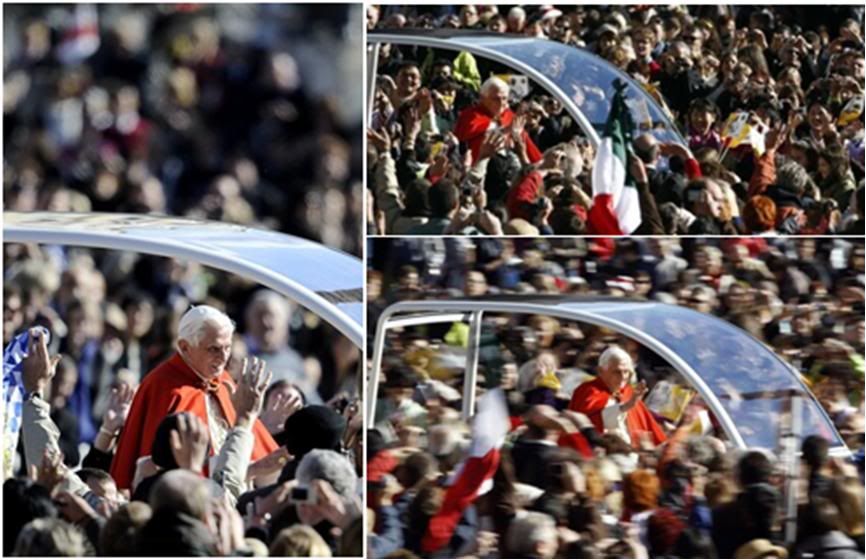
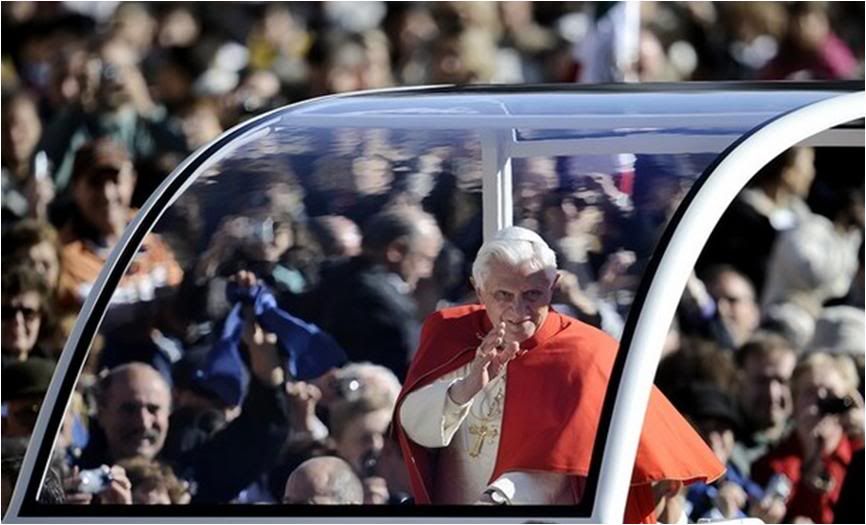
Pope Benedict XVI said today that the role of women in the Church is equally important as that of ordained priesthood, without overlapping it, for the spiritual growth of the community, as he discussed the life and legacy of St. Bridget of Sweden, one of the co-patrons of Europe, at the General Audience.
Moreover, often they are the “driving force” and “spiritual centre” of the family, the domestic Church, he said in his catechesis.
After his plurilingual greetings to the pilgrims present, the Holy Father called on the international community to quickly provide relief following a disastrous earthquake and tsunami in Indonesia and severe floods in Benin.
The Holy Father assured the people of Asia and Africa that he was praying for them and urged global donors to provide the necessary relief aid to “alleviate the suffering of those affected by such devastation”.
Here is how he synthesized the catechesis in English:
Our catechesis today is on Saint Bridget of Sweden. Born in 1303, she grew up steeped in the faith. She and her husband had eight children, and dedicated themselves with great fervour to the spiritual life and their children’s Christian formation.
Bridget was the driving force behind her and her husband’s "conjugal sanctity", and became a model for many women through the ages of how to be the spiritual centre of the family.
Following her husband’s death, Bridget renounced further marriage in order to deepen her union with the Lord, through prayer, penance and works of charity. She gave away her possessions and lived in a monastery.
In her prayer, she experienced many intense mystical experiences. In 1349, she made a pilgrimage to Rome, to obtain Papal approval for a religious order of both men and women which she intended to found, and, while in Rome, she lived a life of intense apostolic prayer and activity.
Bridget died in 1373, and was canonized 18 years later. She is a significant reminder of a united Western Christendom, a powerful example of feminine sanctity, and was proclaimed co-Patroness of Europe by the Venerable John Paul II, during the Great Jubilee.
May her intercession help unite all Christians, and draw the people of Europe to an ever greater appreciation of their unique and invaluable Christian heritage.
I am pleased to welcome all the English-speaking pilgrims and visitors present today. In particular, I extend greetings to the Bridgetine Sisters here for their General Chapter. Upon all of you, I invoke God’s abundant blessings.
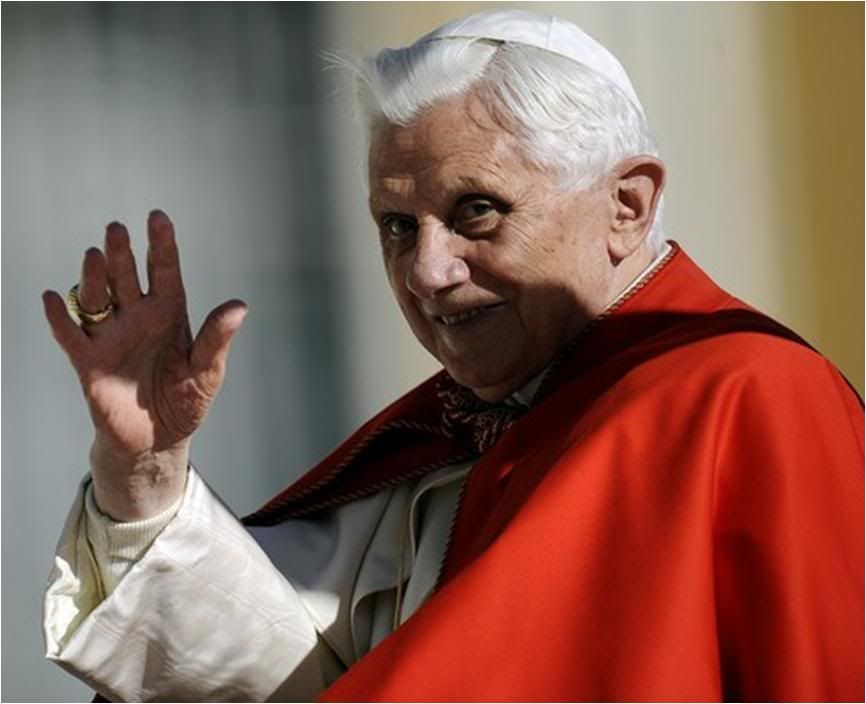

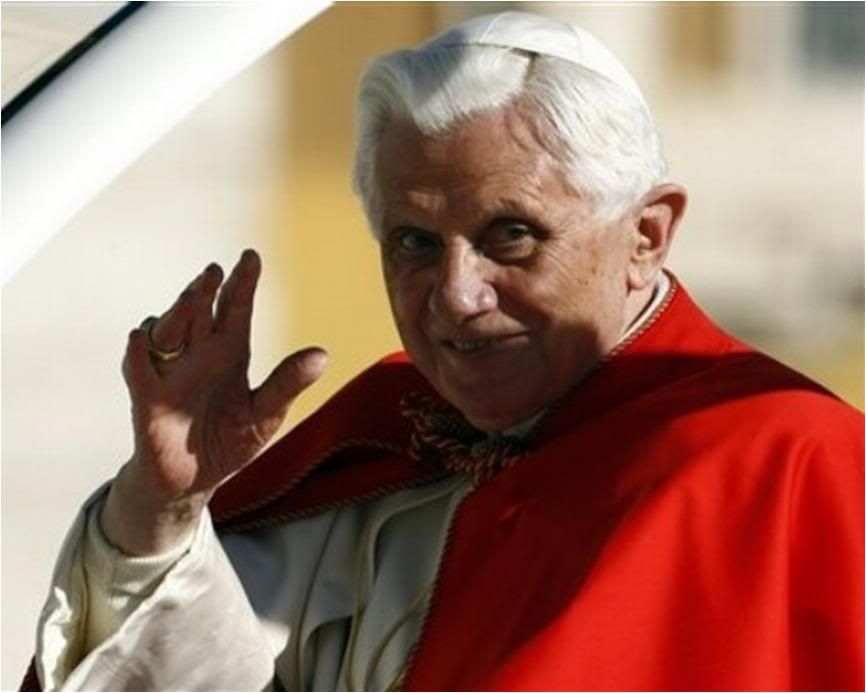

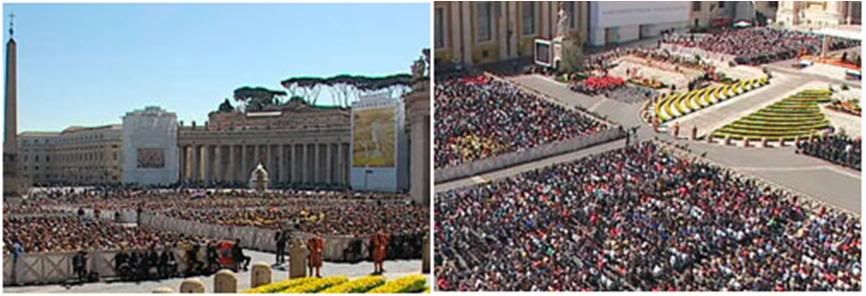
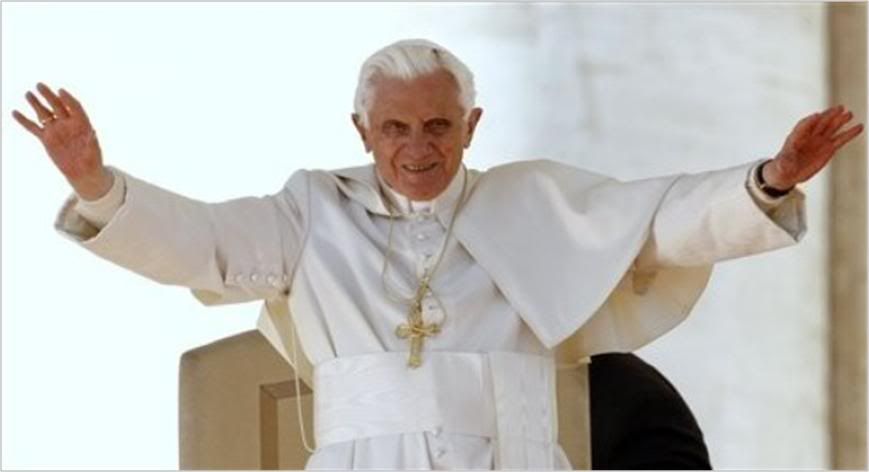
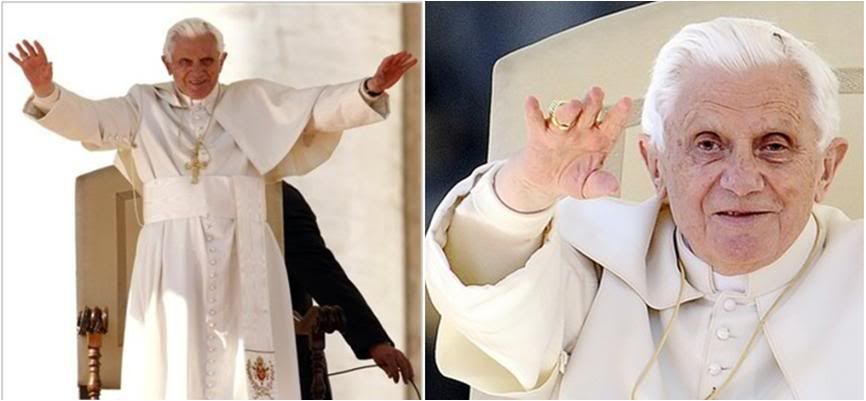
Here is a full translation of today's catechesis:

Dear brothers and sisters,
During the fervent eve of the Great Jubilee of 2000, the Venerable Servant of God John Paul II proclaimed St. Bridget of Sweden a co-patron for all Europe.
This morning, I wish to present her figure, her message, and the reasons why this holy woman has much to teach us - even today - to the Church and the world.
We know quite well the events of the life of St. Bridget, because her spiritual fathers published her biography to promote the cause for her canonization shortly after her death in 1373.
Bridget was born 70 years earlier, in 1303, in Finster, Sweden, a northern European nation that had, three centuries earlier, welcomed the Christian faith with the same enthusiasm that our saint received it from her parents - who were very pious and belonged to a noble family close to the reigning royal house.
We can distinguish two periods in the life of the saint. The first was characterized by her status as a happily married woman. Her husband was Ulf, governor of an important district in the kingdom of Sweden. Their marriage lasted 28 years, until Ulf's death.
They had eight children, of whom the second-born, Karin, is also venerated as a saint. This is an eloquent sign of Bridget's commitment in educating her own children.
Moreover, her pedagogical wisdom was appreciated to the point that King Magnus of Sweden called her to the court for a certain time in order to introduce his young wife, Blanche of Namur, to Swedish culture.
Bridget, under the spiritual guidance of a gifted religious who initiated her in the study of Scriptures, exercised a very positive influence on her own family which, thanks to her presence, became a true 'domestic church'.
Together with her husband, she took up the rule of the Third Franciscan Order. She generously practised works of charity towards the indigent and founded a hospital.
With his wife, Ulf learned to improve his own character and progress in Christian living. Returning from a long pilgrimage to Santiago de Compostela in 1341, which they undertook with their family, the spouses decided to live in continence. Shortly after, however, Ulf's earthly existence ended in the peace of a monastery to which he had retired.
This first part of Bridget's life helps us to appreciate what we can call today an authentic 'conjugal spirituality': Together, Christian spouses can follow a path of holiness, sustained by the grace of the Sacrament of matrimony.
It is not uncommon, as it happened in the life of Bridget and Ulf, that it is the woman who, with her religious sensibility, her delicacy and kindness, succeeds in making her husband follow the path of faith.
I think with appreciation of so many women who, day after day, even today illumine their families with their personal witness to Christian life. May the Spirit of the Lord inspire holiness in Christian spouses even today, to show the world the beauty of matrimony lived according to the values of the Gospel: love, kindness, reciprocal aid, fecundity in the generation and education of their children, openness and solidarity with the world, participation in the life of the Church.
When Bridget was widowed, the second phase of her life began. She renounced prospects of another marriage to deepen her union with the Lord through prayer, penitence and charitable works. Thus, even Christian widows can find in this saint a model to follow.
Bridget, on her husband's death, gave away her own possessions to the poor. And although she never acceded to religious consecration, she settled at the Cistercian monastery of Alvastra.
Here, she begin to have divine revelations which accompanied her for the rest of her life. She dictated these visions to her confessors who translated them from Swedish to Latin and compiled them into eight books entitled Revelations. To this was added a supplement called Revelationes extravagantes (Supplementary REvelations)
St. Bridget's Revelations present a very varied content and style. At times, they are presented as dialogues among the Divine Persons, the Virgin, the saints and even demons - dialogs in which Bridget intervenes. At other times, they describe a particular vision; and in still others, what the Virgin Mary revealed to her about the life and mysteries of her Son.
The value of St. Bridget's Revelations, sometimes the object of doubts, was defined by the Venerable John Paul II in the letter Spes aedificandi: "Recognizing the holiness of Bridget, the Church, without making a pronouncement on individual revelations, has accepted the overall authenticity of her interior experience" (No. 5).
Indeed, reading these Revelations, we are interpellated on many important topics. For example, a frequent recurrence is the description, with rather realistic details, of the Passion of Christ, towards which Bridget always had a special devotion, contemplating in it God's infinite love for men.
On the lips of the Lord who speaks to her, she daringly puts these moving words: "O my friends, I love my sheep so tenderly that if it were possible, I would die as many times for each of them the same death that I suffered for the redemption of all" (Revelationes, Libro i, c. 59).
Even the painful maternity of Mary, her Mediatrix and Mother of mercy, is a subject that often recurs in Bridget's Revelations. Receiving these charisms, Bridget was aware that she was the recipient of a gift showing great favor from the Lord:
"My daughter," we read in the first book of Revelations, "I chose you for myself, love me with all your heart... more than everything that exists in the world" (c 1).
Moreover, Bridget knew quite well - she was convinced of this - that every charism is destined to edify the Church. Precisely because of this, not a few of her Revelations were addressed - in the form of sometimes severe admonitions - to the believers in her time, including religious and political authorities, that they might live their Christian life consistently.
But she always did this with respect and full faithfulness to the Magisterium of the Church, particularly that of the Successor of Peter.
In 1349, Bridget left Sweden for always when she went to Rome on a pilgrimage. Not only did she intend to take part in the Jubilee of 1350, but she also wanted to get the Pope's approval for the Rule of a religious order that she intended to found, dedicated to the Holy Savior, and composed of both monks and nuns under the direction of an abbess.
Indeed, the great Christian tradition has always recognized a woman's particular dignity, and - always with the example of Mary, Queen of Apostles - her own place in the Church, which without overlapping that of the ordained priesthood, is equally important for the spiritual growth of the community.
Moreover, the collaboration of consecrated men and women, with respect to their specific vocations, has taken on great importance in today's world.
In Rome, with her daughter Karin, Bridget dedicated herself to a life of intense apostolate and prayer. From Rome, she went forth on pilgrimages to the various Italian shrines, particularly Assisi, hometown of St. Francis, for whom she had always nurtured a great devotion.
Finally, in 1371, the crowning achievement of her greatest desire: a trip to the Holy Land, in the company of her spiritual children, a group she called 'friends of God'.
At that time, the Popes lived in Avignon, far from Rome. Bridget called on them desperately to return to the See of Peter in the Eternal City. But she died in 1373, before Pope Gregory XI could finally return to Rome.
She was temporarily interred in the Roman church of San Lorenzo in Panisperma, but in 1374, her children Birger and Karin brought her back to Sweden, to the monastery of Vadstena, seat of the order that she had founded, and which soon underwent a remarkable expansion. And in 1391, Pope Boniface IX canonized her.
Bridget's holiness, characterized by a multiplicity of gifts and experiences that I wished to recall in this brief spiritual biography, made her an eminent figure in the history of Europe.
A native of Scandinavia, St. Bridget bears witness to how Christianity had profoundly permeated the life of all the peoples of the continent.
In declaring her a co-patron of Europe, Pope John Paul II expressed the wish that the saint - born in the 14th century when Western Christianity had not yet healed from its divisions - may intercede effectively before God to obtain the long-awaited grace of full unity among all Christians.
For this same intention, which is very much in our heart, and so that Europe may always nourish herself from her Christian roots, let us pray, dear brothers and sisters, invoking the powerful intercession of St. Bridget of Sweden, faithful disciple of God and co-patron of Europe.
Thank you for your attention.
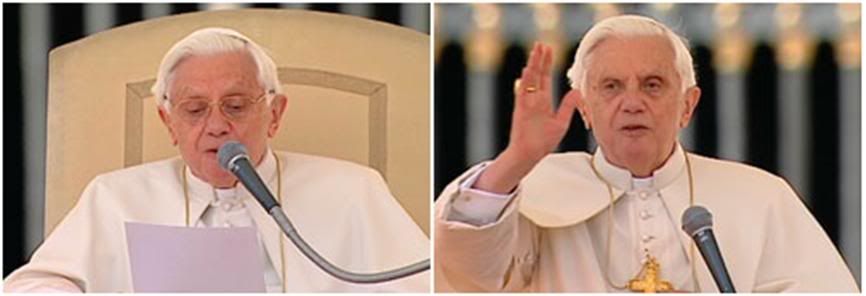



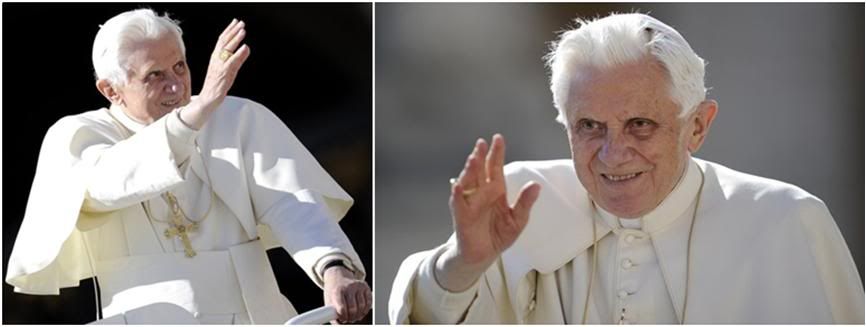

 Pope praises women who give
Pope praises women who give
Christian inspiration to their families
By Cindy Wooden

VATICAN CITY, Oct. 27 (CNS) -- Pope Benedict XVI praised the millions of Catholic women in the world who inspire their husbands and children to live truly Christian lives.
At his weekly general audience Oct. 27, the Pope said he wanted to recognize "the many women who, day after day, enlighten their families with their witness of Christian life."
"May the Spirit of the Lord raise up holy Christian spouses today to show the world the beauty of marriage lived according to the Gospel values: love, tenderness, mutual help, fruitfulness in generating and educating children, openness and solidarity with the world, and participation in the life of the Church," he said.
The Pope's remarks about women in the Church and in family life were part of his catechesis about the life and influence of St. Bridget of Sweden, who lived in the 14th century.
Bridget and her husband, Ulf, were the parents of eight children and were models of "an authentic conjugal spirituality," the Pope said.
"Often, as happened in the life of St. Bridget and Ulf, it is the woman who, with her religious sensitivity, delicacy and sweetness, is able to make her husband mature in the faith journey," he said.
After Ulf died, Bridget sold her possessions and dedicated her life to prayer and good works, which makes her a model for Christian widows, the pope said.
St. Bridget also received divine revelations, many of which were addressed, "even in the form of harsh admonitions, to believers in her time, including religious and political authorities so that they would correctly live their Christian life," Pope Benedict said.
But, he said, she always shared the revelations "with an attitude of respect and full fidelity to the magisterium of the church, particularly to the successor of the Apostle Peter," Pope Urban V, whom she urged to return to Rome at a time when the papacy was based in Avignon, France.
Pope Benedict said that St. Bridget, founder of the Bridgetine Sisters, had hoped to establish a monastic order with branches for both men and women.
"This should not surprise us: In the Middle Ages, there were monastic foundations with a male and female branch that followed the same monastic rule under the direction of an abbess.
In fact, the great Christian tradition recognizes that women have their own dignity and -- following the example of Mary, queen of the Apostles -- their own place in the church, which without involving ordained priesthood, is just as importance for the spiritual growth of the Church," he said.
At the end of the audience, Pope Benedict offered his prayers for the people of Indonesia, suffering the effects of an earthquake, tsunami and volcanic eruption; and for the people of Benin, thousands of whom were left homeless because of flooding.
Sidelights of today's GA
Translated from the 10/28/10 issue of
 The gratitude of Sulmona
The gratitude of Sulmona
for the Pope's visit
A 'change of mentality' from 'resignation to hope', from lamenting misfortune to rolling up one's sleeves: These are 'the new, exciting adn encouraging perpectives', resulting from the Pope's visit to Sulmona last July 4, according to Mons. Angelo Spina, Bishop of Sulmona, who came to the audience yesterday with 1,000 pilgrims from the diocese, "above all to give thanks to the Holy Father".
Mons. Spina says that his people "have advanced up one step in facing serious problems like unemployment and the consequences of the April 2009 earthquake. There is no longer a climate of resignation, passivity and discouragement of people who think they cannot do anything".
He says that the important elements of this 'gust of fresh air' that the Pope brought to Sulmona "are the full rediscovery of the Word of God and the Eucharist, which concretizes the commitment to charity and solidarity".
A spiritual bouquet
from the youth of Brno
Another 'special fruit' from a papal visit was brought to St. Peter's Square by 60 young people from the Czech Republic city of Brno.
A year after the Pope's visit to their land, they brought him a parchment 'certifying the 3,776 hours of Eucharistic Adoration' that they offered for the Pope's intentions.
Bridgetine sisters present
for the catechesis on their founder
"The Christian roots of Europe and ecumenism are the bases, which will never be out of fashion, of the Bridgetine Order," said Abbess General Mother Tekla Famiglietti, who was present along with officials and members of the order at the Wednesday audience.
They have been holding their annual general meeting in Rome. "Our work confirms the relevance of the Bridgetine ecumenical spirit", she said.
Followers of newly-beatified
Suor Alfonsa Clerici
Equally relevant today is the educational and charitable charism of Blessed Alfonsa Clerici, the 19th-century nun from Vercelli who was beatified last Saturday.
Present at the Wednesday audience were Archbishop Masseroni of Vercelli, the Superior of the Sisters of the Most Precious Blood, which was Blessed Alfonsa's order, and the postulator of her cause for sainthood, who accompanied a group of pilgrims celebrating the event.
Moscow Cathedral Choir
performs for Benedict XVI
The new choir of the Catholic cathedral of Moscow performed for Benedict XVI at the GA yesterday.
"We are in Rome for the first time," said choir director Ludmila Mesnikovich, "but we hope that we shall soon be able to welcome the Pope to Moscow. We are all awaiting his visit".
The choir members said that "the patrimony of sacred music opens new horizons in the ecumenical dialog".
US 'wounded warriors'
on pilgrimage
Also attending yesterday's audience were some represetantives of the Wounded Warriors, an organization of American soldiers who have been seriously wounded and often mutilated or heavily disabled during their service in Iraq. Along with their families, they are in Rome for a 'spiritual pilgrimage'.
[Modificato da TERESA BENEDETTA 28/10/2010 00:22]